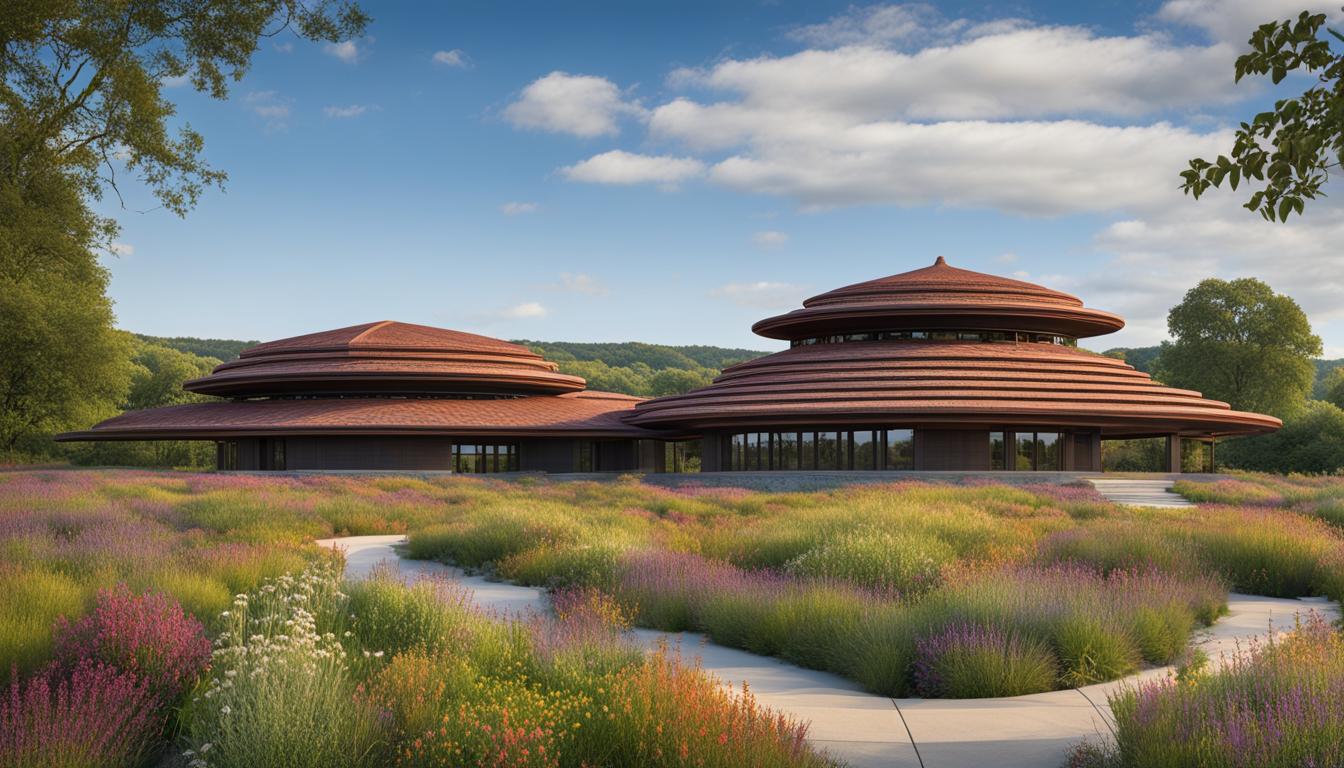Welcome to our exciting journey through the world of Prairie Style Art. In this article, we’ll delve into the captivating realm of prairie landscape art, as we uncover the history, influence, and beauty of this iconic American art movement. From the sweeping Midwestern landscapes that inspired the prairie school artists to the architectural masterpieces of Frank Lloyd Wright, we’ll explore the rich tapestry of the prairie art movement that has shaped the American regionalism and naturalist art.
Throughout our exploration, we’ll discover the distinct characteristics of Prairie Style Art, such as its emphasis on horizontal lines, low-pitched roofs, and seamless integration with the natural surroundings. We’ll delve into the beginnings of this movement in the Midwest, where artists sought to depict the unique beauty of the prairie landscape.
Frank Lloyd Wright, a visionary architect, will take center stage as we examine his profound impact on Prairie Style Art. His innovative designs, including the iconic Robie House and Unity Temple, revolutionized the architectural world and became synonymous with the movement.
We’ll also delve into the broader influence of Prairie Style Art on the American art scene, exploring how it shaped the early 20th-century American art movement. From iconic paintings to awe-inspiring sculptures, we’ll uncover the lasting impact of Prairie Style Art on the artistic landscape.
Throughout our journey, we’ll showcase some of the most significant and influential examples of Prairie Style Art, including the works of Frank Lloyd Wright and other notable artists. The innovative designs and evocative paintings will transport us to the heart of the American Midwest, where the beauty of the prairie unfolds.
Join us as we celebrate the legacy of Prairie Style Art and its continued relevance in the modern art scene. We’ll explore how contemporary artists embrace the principles of Prairie Style Art, channeling their creativity to capture the beauty of the Midwest landscape.
Our journey concludes by inviting you to embrace the beauty of Prairie Style Art and appreciate the harmony between architecture, nature, and the American regionalism movement. So come along, let’s venture into the world of Prairie Style Art and immerse ourselves in its breathtaking beauty.
The Beginnings of Prairie Style Art
The roots of Prairie Style Art can be traced back to the Midwest region of the United States, where artists were inspired by the vast prairie landscapes. In the late 19th century, American regionalism started to gain prominence, with artists seeking to depict the unique characteristics of their local environment. The Midwest, with its expansive prairies and rolling hills, became a popular subject for artists who embraced the naturalist approach.
These artists, influenced by European landscape painting traditions, developed their own distinctive style that captured the essence of the Midwest. They sought to celebrate the beauty of the prairie landscape and depict the spirit of the region through their artwork. The naturalist approach allowed them to convey the raw beauty, tranquility, and expansive vistas of the Midwest.
This section explores the beginnings of Prairie Style Art, tracing its origins to the Midwest landscape and the artists who found inspiration in its vastness. We delve into how American regionalism played a crucial role in shaping the movement and how artists used their unique style to showcase the charm and allure of the Midwest. Through these early beginnings, Prairie Style Art emerged as a significant artistic movement that continues to influence and inspire artists today.
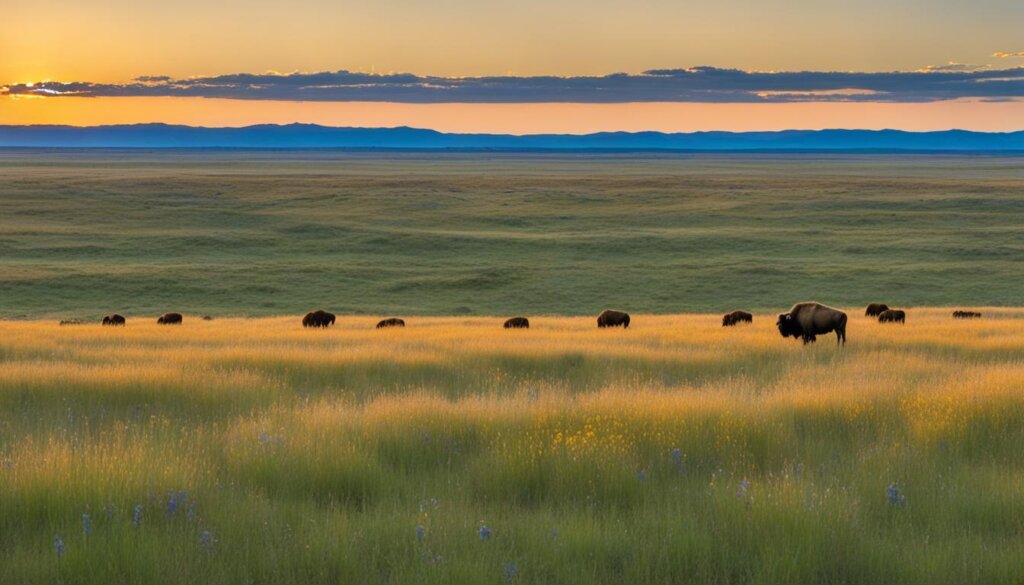
Frank Lloyd Wright and the Prairie Style
A key figure in the development of the Prairie Style Art movement was the renowned architect Frank Lloyd Wright. Wright believed that architecture should be in harmony with its natural surroundings and sought to create buildings that blended seamlessly with the landscape. He designed a series of iconic structures that incorporated the principles of the Prairie Style, characterized by horizontal lines, low-pitched roofs, and open floor plans. Wright’s designs emphasized the use of natural materials, such as wood and stone, and featured large windows that brought in ample natural light. His work became synonymous with Prairie Style Art, and he inspired a new generation of artists and architects to embrace this design philosophy.
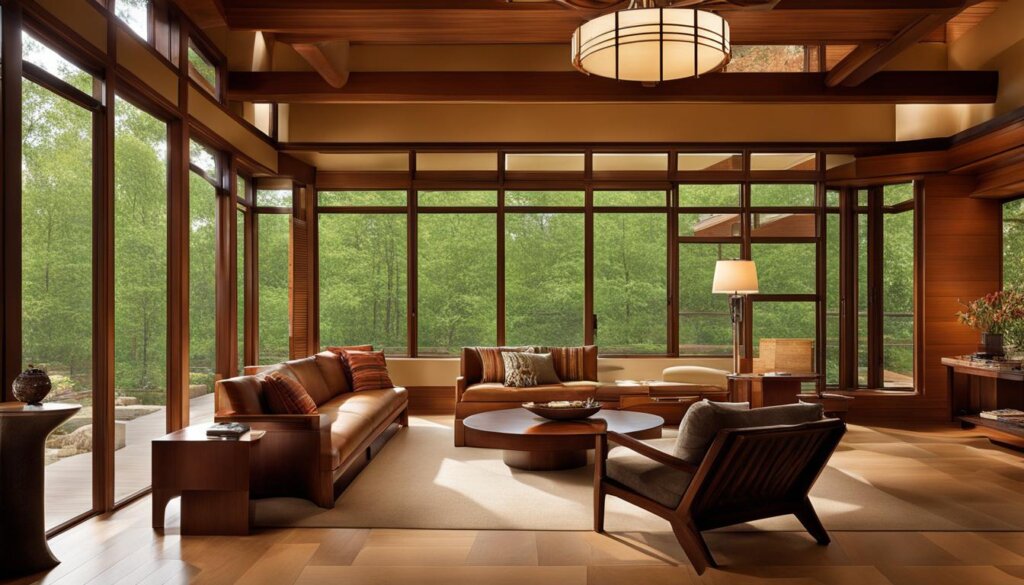
Incorporating the principles of the Prairie Style, Frank Lloyd Wright’s architectural designs revolutionized the way buildings interact with their environments. His vision for harmonious architecture inspired a movement that extended beyond structures and into the broader American art scene. Wright’s influence paved the way for prairie style artists and the emergence of prairie school art.
The Influence of Prairie Style Art on American Art
The impact of Prairie Style Art extended beyond architecture and influenced the broader American art scene. Artists across various disciplines, including painting, sculpture, and decorative arts, were inspired by the principles of the Prairie Style.
The movement emphasized a connection to nature and a celebration of the American landscape, leading to the development of a distinctively American art movement. Prairie Style Art was characterized by its naturalist approach, with artists seeking to depict the beauty of the land in a realistic and evocative manner.
This distinctive style of art played a crucial role in shaping the American art movement of the early 20th century. It challenged traditional European artistic influences and embraced a uniquely American aesthetic that celebrated the vastness and diversity of the American landscape.
Artists who were part of the Prairie Style Art movement aimed to capture the essence of the prairie, often using natural materials and earth tones to convey a sense of harmony with the land. This emphasis on naturalism and the celebration of the American landscape contributed to the overall shift towards a more authentic and locally inspired art scene in the United States.
Prairie Style Art paved the way for other influential American art movements, such as American Regionalism, which further explored the relationship between art and place. It fostered a sense of pride and identity rooted in the unique characteristics of the American landscape and became an essential part of the cultural fabric of the nation.
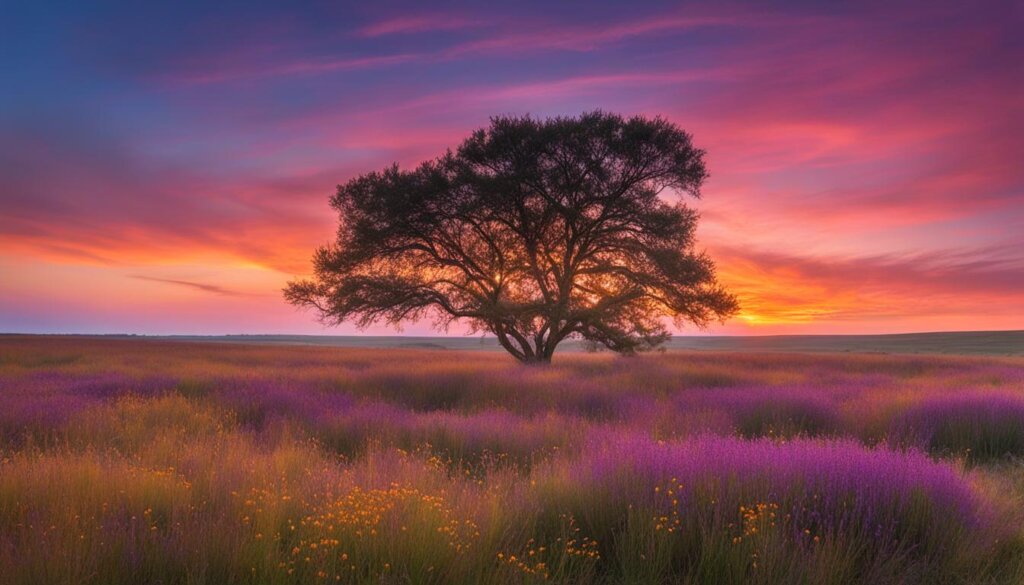
The Evolution of American Art
The influence of Prairie Style Art can be seen in the works of renowned American artists such as Grant Wood, Thomas Hart Benton, and John Steuart Curry. These artists embraced the naturalist approach and drew inspiration from the prairie landscape, creating artwork that reflected the spirit and values of Prairie Style Art.
- Grant Wood’s iconic painting “American Gothic” is a prime example of the influence of Prairie Style Art on American art. The painting depicts a Midwest couple in front of a farmhouse, showcasing the simplicity and strength of the American heartland.
- Thomas Hart Benton’s murals, such as “Pioneer Days and Early Settlers,” capture the spirit of the Midwest through bold colors and dynamic compositions. His work conveys a sense of pride and celebration of the American landscape.
- John Steuart Curry’s “Tornado Over Kansas” is a powerful depiction of the intensity and drama of the Midwest storms. His artwork reflects the awe-inspiring nature of the prairie and the resilience of the people who call it home.
The influence of Prairie Style Art can also be seen in other forms of American artistic expression, such as literature and music. Writers and musicians embraced the naturalist approach and drew inspiration from the prairie landscape, contributing to the development of a uniquely American artistic identity.
In conclusion, Prairie Style Art had a profound and lasting influence on the American art scene. Its emphasis on naturalism, connection to nature, and celebration of the American landscape shaped a distinctively American art movement. Artists across various disciplines were inspired to create work that reflected the beauty and spirit of the prairie, contributing to the evolution of American art as a whole.
Iconic Examples of Prairie Style Art
Prairie Style Art is renowned for its influential artists and architects who have left a lasting impact on the American art scene. Among these visionaries is the legendary architect Frank Lloyd Wright, whose designs epitomize Prairie Style architecture.
Two of Wright’s most iconic works, the Robie House and Unity Temple, showcase the essence of Prairie Style architecture. The Robie House, located in Chicago, Illinois, features the movement’s characteristic horizontal lines, open floor plans, and integration with the natural surroundings. Its unique design and spatial composition have made it a symbol of Prairie Style excellence.
Unity Temple, situated in Oak Park, Illinois, further demonstrates Wright’s mastery of the Prairie Style principles. With its low-pitched roof, geometric patterns, and innovative use of light, the temple represents a harmonious fusion of architecture and nature.
While Frank Lloyd Wright remains synonymous with Prairie Style Art, other notable artists have also embraced the movement. Grant Wood, famous for his iconic painting “American Gothic,” captured the spirit of the Midwest landscape in his realistic and evocative artworks. Artists such as Thomas Hart Benton and John Steuart Curry also celebrated the Midwest region through their paintings, reflecting the values and aesthetics of Prairie Style Art.
These renowned artists and architects have left an indelible mark on the art world, showcasing the beauty and significance of Prairie Style Art. Their works continue to inspire and captivate audiences, embodying the artistic spirit of the American Midwest.
The Legacy of Prairie Style Art
The legacy of Prairie Style Art continues to have a profound impact on the American art scene. This iconic art movement, which celebrates the prairie landscape and integrates with the natural environment, has left a lasting imprint on American regionalism and the broader American art movement.
One of the enduring legacies of Prairie Style Art is the ongoing celebration of American regionalism. This artistic movement focuses on capturing the unique characteristics of different regions within the United States, emphasizing a connection to place and local identity. Inspired by the Prairie Style, artists continue to depict the beauty of the Midwest landscape and explore the distinctiveness of different regions throughout the country.
Prairie Style architecture, with its emphasis on harmony with nature, also continues to inspire architects and designers. The principles of integrating with the natural environment, horizontal lines, and open spaces are still evident in contemporary architectural designs. The influence of Prairie Style can be seen in buildings that seek to blend with their surroundings and create a sense of unity with the landscape.
Prairie Style Art and Its Integral Role in the American Art Movement
The significance of Prairie Style Art reaches beyond specific artistic disciplines. Its principles and aesthetics have become integral to the American art movement as a whole. The movement’s focus on a connection to nature and a deep appreciation for the local environment aligns with broader themes in American art. Artists across different mediums continue to explore these ideas, creating works that reflect the beauty of the natural world and the unique cultural identity of the American Midwest.
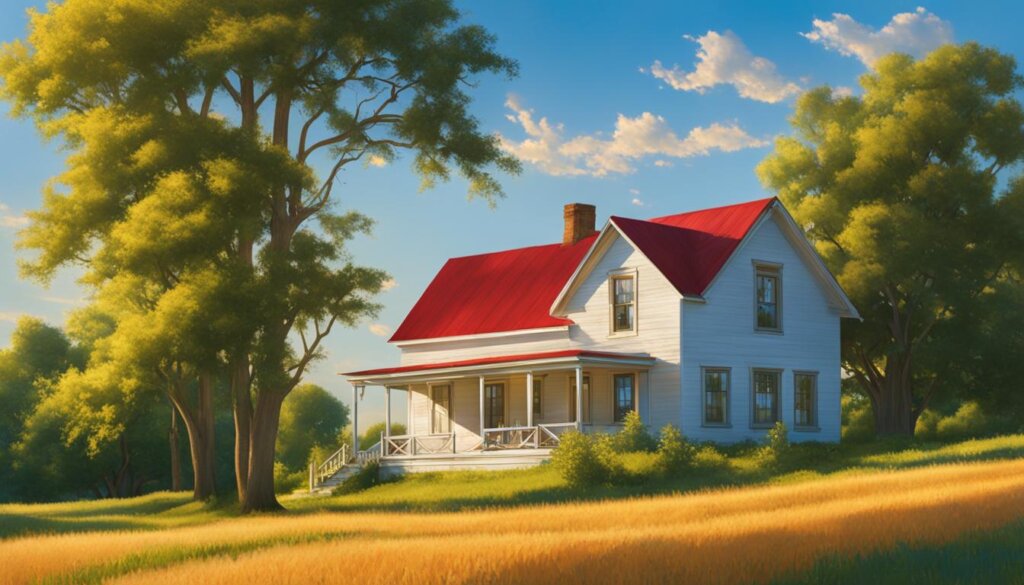
By embracing the legacy of Prairie Style Art, we can gain a deeper understanding of the intrinsic relationship between art and the environment. The movement’s emphasis on celebrating the prairie landscape and integrating with nature serves as a reminder of the importance of our surroundings and the inspiration they provide. Prairie Style Art continues to shape and influence the American art scene, reminding us of the beauty and significance of our natural world.
Exploring Prairie Style Art Today
Prairie Style Art continues to captivate artists and art enthusiasts today, embracing its rich heritage and exploring new horizons. Exhibitions and galleries dedicated to Prairie Style Art showcase the talent and creativity of contemporary artists who draw inspiration from the magnificent Midwest landscape. By staying true to the naturalist approach, these artists skillfully employ a variety of materials and techniques to capture the essence and beauty of the prairie. They aim to reflect their local environment, engage with the tranquility of nature, and honor the enduring American regionalism movement.
Contemporary Prairie Style artists remain deeply connected to the natural world, seeking inspiration and solace from the landscapes that define their surroundings. Whether through painting, sculpture, or mixed media, these artists strive to convey the sweeping vistas, vibrant colors, and intimate details that embody the spirit of the prairie. By celebrating the beauty of nature, Prairie Style Art invites us to reconnect with the landscapes that shape our lives and appreciate the harmonious relationship between art and the environment.
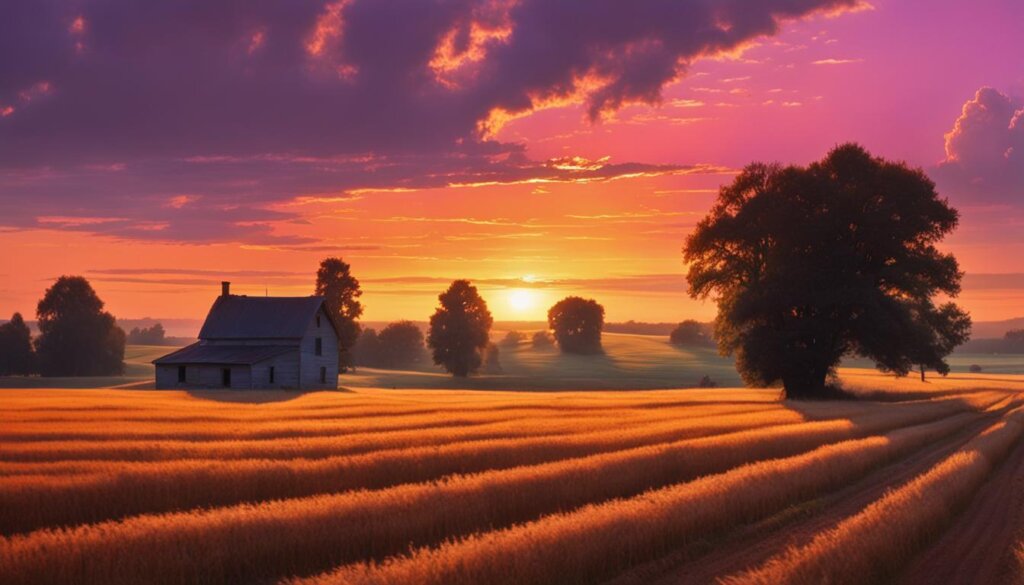
Today, Prairie Style Art continues to thrive, offering a fresh perspective on the ever-evolving American art scene. By visiting exhibitions, attending workshops, or exploring online galleries, art enthusiasts can discover the diverse expressions of Prairie Style Art in the modern era. Through their art, contemporary Prairie Style artists invite us to immerse ourselves in the wonder and tranquility of the Midwest and experience the powerful connection between art, nature, and the American regionalism movement.
Embracing the Beauty of Prairie Style Art
Prairie Style Art allows us to immerse ourselves in the stunning landscapes of the vibrant Midwest and witness the seamless integration of architecture and nature. By embracing its naturalist approach and celebrating the prairie, Prairie Style Art captures the essence of the American Midwest and embodies its unique cultural identity. Through the principles and aesthetics of this art movement, we gain a deeper understanding of the intrinsic connection between art and the environment.
Exploring Prairie Style Art is an opportunity to appreciate the beauty of the Midwest landscape and its rich cultural heritage. The movement’s emphasis on the harmony between architecture and nature creates a sense of tranquility and connection to the land. From the horizontal lines and low-pitched roofs to the integration with the surroundings, every element of Prairie Style Art reflects the natural beauty of the prairie.
Whether you choose to visit the iconic architectural landmarks that embody Prairie Style Art or engage with contemporary artists who draw inspiration from the movement, embracing this art form allows us to discover the beauty and significance of the Midwest. Through Prairie Style Art, we can celebrate the enchanting prairie landscape and the intricate relationship between art and the environment.
Source Links
- https://www.next.cc/journey/discovery/prairie-architecture
- https://academics.depaul.edu/liberal-studies/first-year-program/course-descriptions/Pages/Explore-Chicago.aspx
- https://gatherandgotravel.com/unity-temple/

